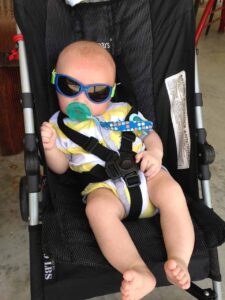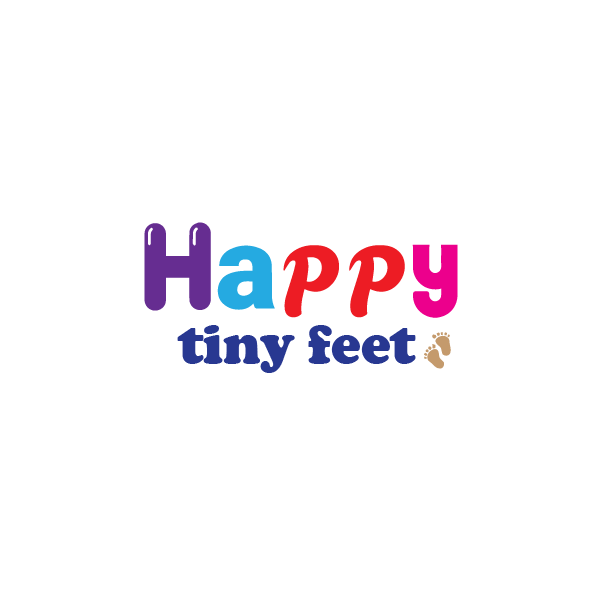Travel and parenting may seem to be a juggling process. It is the last thing you need when you are at the airport; you have luggage, snacks, and hungry toddlers, and you are confused because the strollers are communication mixed up. This is why it is important to learn the rules for using a stroller on a plane before your next vacation with your family.
Here, you will find out how to travel with a stroller easily: airline policies, stroller recommendations, packing tips, tips on how you can easily travel with a stroller plus tips on how to travel with a stroller as narrated by parents who travel frequently.
The Reason You Taken to Know the Rules Before You Fly with a Stroller
Travelling with children by air is a wonderful, but uncertain life. The rules of the airlines concerning the use of strollers are special in order to provide safety and convenience to every passenger.
Being aware of these before hand will assist you:
There will be no last-minute gate hassles.
Guard against destruction of stroller.
Make your baby at ease on a lay over.
Travel light and stress-free.
Furthermore, once you have the rules, you can be smarter about planning your trips, not only in saving time and energy, but also in saving some additional baggage charges.
Types of Strollers You Can Take on a Plane
Before packing, let’s look at the types of strollers allowed on most airlines. Each has its pros and cons depending on your travel style.
| Type | Description | Best For | Example Model |
| Umbrella Stroller | Lightweight, foldable, easy to carry | Short trips, toddlers | Summer Infant 3Dlite+ Convenience Stroller |
| Travel System Stroller | Includes a car seat + stroller combo | Infants and newborns | Graco Modes Nest Travel System |
| Compact/Lightweight Stroller | Cabin-size, quick fold, fits in overhead bins | Frequent flyers | GB Pockit+ All-City |
| Jogging Stroller | Larger wheels, suspension system | Active parents | BOB Gear Revolution Flex 3.0 |

Airline Rules for Strollers: What Parents Should Know
Each airline has its own stroller policy, but general rules are quite similar across major carriers.
Let’s break them down:
- Size and Weight Restrictions
Most airlines allow:
- Small, foldable strollers under 20 lbs as carry-ons.
- Heavier or full-size strollers must be checked at the gate or baggage counter.
👉 Pro Tip: Always measure your stroller dimensions before leaving home. Airlines like Delta, American, and Emirates specify maximum stroller sizes on their websites.
- Gate-Check vs. Cabin-Carry
- Gate-check: You hand over your stroller at the boarding gate. It’s stored below the plane and returned to you right after landing.
- Cabin-carry: Only possible for lightweight strollers that fit overhead compartments.
- Folding Requirement
Airlines require strollers to be fully collapsible. Non-foldable jogging strollers are usually not permitted on board.
- Labeling and Protection
Always tag your stroller with:
- Name and contact info.
- “Fragile” stickers if available.
Use a stroller travel bag to prevent dirt and damage. - Special Cases
Parents traveling with newborns or twins may carry an extra item like a diaper bag or baby carrier without extra charge.
Travel Preparation Checklist for Parents
Before you head to the airport, double-check this quick list:
- ✅ Fold and test your stroller at home.
- ✅ Bring a travel bag or protective cover.
- ✅ Check airline stroller policy online.
- ✅ Attach ID tags to stroller and bags.
- ✅ Keep a baby carrier for boarding convenience.
Best Practices: How to Use a Stroller on a Plane Safely
It is not difficult to travel with a stroller because you are aware of the procedure. Follow these simple steps:
-
At the Airport
1.Stroll through security (it is permitted).
2.It can be swabbed or inspected by TSA – this is under one minute.
3.Have a bag with baby supplies which should be placed under the seat.
-
At the Boarding Gate
1.Request airline staff of a gate-check tag.
2.When boarding begins fold up your stroller.
3.Take off detachable items (such as cup holders or snack trays).
-
During the Flight
1.Check in your small stroller in the carry-on the overhead.
2.Secure your baby on you on your lap or a seatbelt harness.
-
After Landing
1.Stand close to the aircraft door or baggage claim area to get back the strollers.
2.It must be checked whether it is damaged or not before leaving the gate area.
Why a Lightweight Stroller is the Best Choice When Travelling by Air
A lightweight stroller is your new best friend in the event that you fly a lot. It is more difficult to fold, carry and drag around the airports or the small aisles of the airplanes.
Top Pick: GB Pockit+ All-City
Pros:
- Folds in seconds.
- Fits overhead compartments.
- Lightweight yet sturdy.
Cons:
- Smaller storage basket.
- Not ideal for rough terrain.
Moreover, it’s one of the few strollers approved by most airlines for cabin storage — a true travel essential.
The Features of Comfort and Safety to consider
When choosing a travel stroller, safety is non-negotiable. The best travel strollers combine comfort, security, and ease of use.
Key safety features include:
- Five-point harness for full body protection.
- Lockable swivel wheels for steady control.
- Adjustable recline for naps on the go.
- UV-protected canopy for outdoor waits.
Example: The Graco Modes Nest2Grow Travel System has adjustable seats, a secure frame, and multi-position recline — ideal for long layovers.
Traveling with Infants: Best Strollers for Newborns
If you’re flying with a newborn, consider a stroller that supports infant car seats or bassinet attachments.
Recommended: UPPAbaby Vista V2
Pros:
- Converts from single to double stroller.
- Premium materials and large basket.
- Smooth suspension for airport floors.
Cons:
- Slightly heavy for solo travel.
- Price on the higher side.
In contrast, the Evenflo Pivot Xpand Modular System is a more budget-friendly alternative with similar flexibility.
Space and Storage: How to Pack Smart
Space is precious during air travel. Therefore, use these hacks to maximize convenience:
- Store diapers and wipes in side pockets.
- Remove bulky accessories before check-in.
- Use a stroller organizer for snacks, bottles, and documents.
- Choose nesting travel bags to compress baby items.
How to Pack a Stroller Bag for Air Travel
Step 2: Wash and Dry Your Stroller.
Wipe off dust and spills. A clean stroller keeps clean and does not get mouldy and stinky.
Step 2: Remove Accessories
Unscrew trays, bottles, and toys in order to prevent breakage. Place them in a zip bag separately.
Step 3: Folding and Securing the Frame.
Fold the stroller in its fullest size and secure it.
Step 4: Use a Padded Travel Bag
Store the stroller in a waterproof travel bag to prevent it being scratched or rain soaked.
Step 5: Label and Tag
Insert your name, contact details and stickers with Fragile. It assists in keeping staff grounded to manage it.
Benefits of Following Airline Stroller Rules
Understanding and following stroller rules isn’t just about compliance — it’s about peace of mind.
Key Benefits:
- Safety: Ensures your child’s comfort and reduces risks during transit.
- Convenience: Simplifies boarding and landing routines.
- Protection: Prevents stroller damage.
- Savings: Avoids replacement costs or check-in fees.
Therefore, being informed makes your journey smoother and your travel experience far more enjoyable.
FAQs About rules of Using a Stroller on a Plane
1.Is it possible to carry with me my stroller?
Yes provided it is small and portable. Otherwise it will need to be gate-checked.
2.Are strollers carried at a fee by airlines?
Majority of airlines permit the use of the strollers without charges, i.e. as baggage or at the gate.
3.Which is the best airplane-travelling stroller?
There are a lot of lightweight models such as GB Pockit+ All-City or Babyzen YOYO2 which are highly recommended.
4.Is it possible to use the stroller when on leave?
Absolutely. When you are at the gate-check you can take it and use it in between flights.
5.What should I do to secure my stroller in the airplanes?
A padded travel bag or a gate-check protects against scratches or dents.
Final Thoughts
Travelling with your kids can be a happy one, provided that you are ready.
With the rules of using a stroller on a plane, you will navigate through the airports like a regular.
Select a lightweight stroller, research the airline regulations and be a smart packer. In addition, go with accessories that will enable you to parent on the move.
Parenting is not an excuse to travel- and with the appropriate stroller then it does not have to be a stressful experience as well.
Now you can go on your next adventure and make sure that you have looked at these rules, chosen your favorite stroller and go away with pride!
